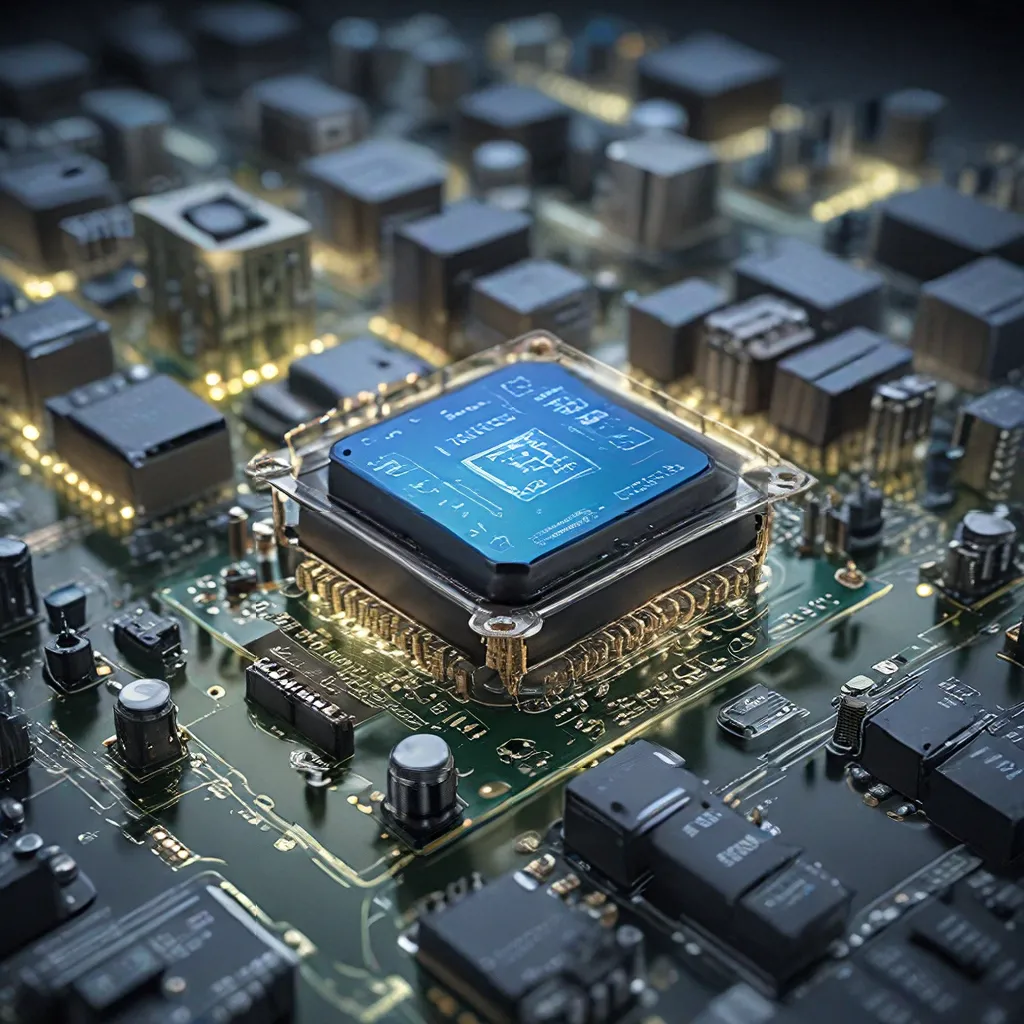
As the world becomes increasingly interconnected, the Internet of Things (IoT) has emerged as a driving force behind this digital revolution. From smart homes and cities to industrial automation and healthcare, IoT technologies have transformed the way we interact with our surroundings. However, the sustainability and scalability of IoT ecosystems have become a pressing concern, particularly when it comes to the power requirements of sensor networks.
Embracing the Era of Ambient IoT
The traditional reliance on batteries to power IoT devices has presented several challenges. These power sources not only contribute to environmental pollution through improper disposal but also limit the longevity and scalability of IoT networks. Recognizing these drawbacks, pioneers in the IoT industry have paved the way for a new era of Ambient IoT, a paradigm that leverages energy harvesting technologies to power smart devices using renewable, natural sources of energy.
Ambient IoT refers to a class of connected IoT devices that harness energy from the environment, such as light, thermal differences, motion, and vibration, to operate without the need for traditional batteries. By harnessing these ambient energy sources, IoT device manufacturers can create more sustainable and scalable solutions, addressing the environmental and operational challenges posed by battery-powered systems.
Advantages of Energy-Efficient Sensor Design
The shift towards Ambient IoT and energy-efficient sensor design offers several compelling benefits that are transforming the future of IoT:
Enabling a Greener Future
By reducing the reliance on batteries, energy-efficient sensor networks contribute to a healthier ecosystem. Improper battery disposal and recycling practices have long been a concern, as they can lead to the release of toxic materials like lead, cadmium, mercury, and lithium into the environment. Embracing battery-less or low-power solutions mitigates this environmental impact, paving the way for a more sustainable IoT landscape.
Improving Scalability
The scalability of IoT networks is directly linked to the ease of deployment and maintenance. Traditional battery-powered sensors often require frequent battery replacements, which can hinder the deployment of denser sensor networks. Integrating energy-harvesting nodes into the IoT ecosystem can help overcome this challenge, enabling the creation of larger, more reliable networks without the added burden of battery management.
Fostering Long-Term Cost Savings
The initial cost of implementing energy-efficient sensor designs may be higher due to the integration of specialized components, such as power management systems. However, the long-term cost savings from reduced maintenance and extended device lifespans often outweigh these upfront investments. By eliminating the need for battery replacements and the associated labor costs, energy-efficient sensor networks can provide significant cost advantages over time.
Unlocking New Use Cases
The compact and durable design of battery-less IoT devices opens up new opportunities for innovative applications. For example, in smart agriculture scenarios, where sensors are installed in remote or harsh environments, energy-harvesting solutions can power the network without the need for frequent battery replacements or wired power connections. This unlocks possibilities for more extensive sensor deployments, enabling enhanced crop monitoring, precision irrigation, and other precision farming techniques.
Challenges and Considerations
While the advantages of energy-efficient sensor design are compelling, there are also some challenges and considerations to address:
Power Limitations
Ambient energy sources, such as light, heat, or vibration, can only generate a limited amount of power compared to traditional batteries. This makes energy-harvesting solutions more suitable for low-power IoT devices that have modest energy requirements, such as beacons, periodic data loggers, or intermittent connectivity applications.
Reconfigurability Constraints
Due to the limited power supply from energy-efficient methods, IoT devices designed for Ambient IoT tend to have lower reconfigurability. These devices are typically optimized for specific functions and may not be as flexible in adapting to changing requirements or dynamic environments.
Device Complexity
Integrating energy harvesting and power management components into IoT devices can increase the overall complexity and cost of the design. Developers must carefully balance the trade-offs between energy efficiency, device capabilities, and manufacturing expenses to create viable solutions.
Innovations in Energy-Efficient Sensor Design
Leading companies in the IoT and semiconductor industries are actively driving innovation in the field of energy-efficient sensor design. Silicon Labs, for instance, has developed a line of xG22E SoCs that are optimized for energy harvesting and low-power operations, catering to the needs of the Ambient IoT ecosystem.
These energy-friendly SoCs feature dual Cortex-M33 and Cortex-M0 radio cores, enabling ultra-fast, low-energy cold starts, efficient energy mode transitions, and low-energy deep-sleep wake-up capabilities. This helps mitigate the challenges of current spikes and damage to storage cells, ensuring the longevity and reliability of battery-less or battery-optimized IoT devices.
To further support the development of energy-efficient sensor networks, Silicon Labs has collaborated with e-peas, a leading provider of Power Management Integrated Circuits (PMICs), to develop an Explorer Kit Shield. This kit allows developers to experiment with alternative battery chemistries, supercapacitors, kinetic pulse harvest applications, and dual harvest sources for their IoT projects.
Powering the Future of Sustainable IoT
As the world becomes increasingly interconnected, the need for energy-efficient and environmentally responsible IoT solutions has never been more pressing. The shift towards Ambient IoT and energy-harvesting technologies is a significant step in addressing the challenges posed by traditional battery-powered sensor networks, paving the way for a more sustainable and scalable future of IoT.
By embracing these innovations, IoT device manufacturers and developers can create a greener, more cost-effective, and innovative ecosystem that unlocks new possibilities for smart applications across a wide range of industries. As we continue to navigate the dynamic landscape of sensor networks and IoT, the advancements in energy-efficient sensor design will undoubtedly play a crucial role in shaping the future of this transformative technology.
To learn more about the latest developments in sensor networks and IoT, visit sensor-networks.org, the leading resource for professionals, researchers, and enthusiasts in this rapidly evolving field.